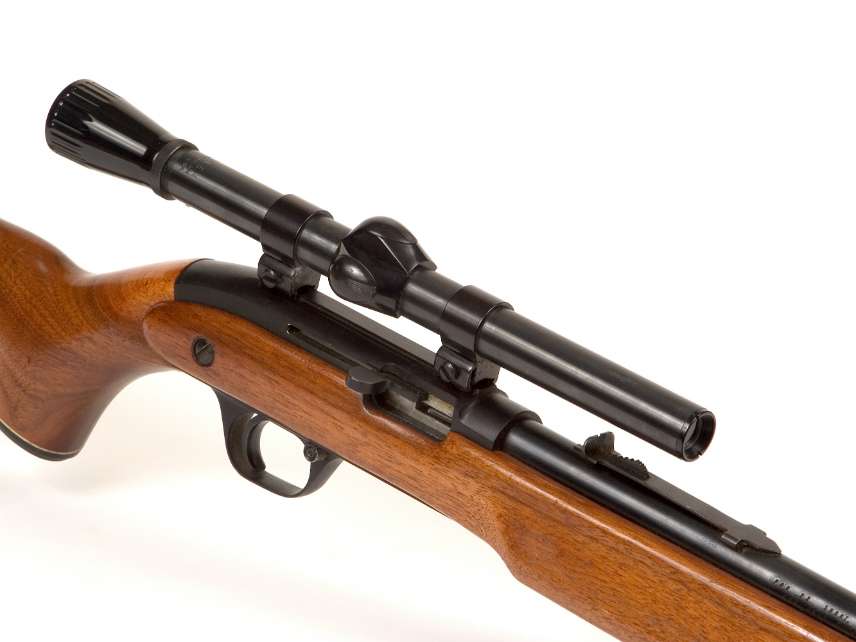This Illinois Town Might Not Have Intended to Ban My Family's 'Peashooter,' But They Still Did
A plain reading of the text suggests that Deerfield's new law covers all semi-automatic rifles that can hold more than 10 rounds.

In a Friday article "My Family's Peashooter Is Now an Illegal 'Assault Weapon' in This Illinois Town," I wrote that a new "assault weapon" ban in Deerfield, Illinois, was written so broadly that it outlawed an old .22 semi-automatic rifle kept by my decidedly non-firearm-obsessed family.
Since publishing that article, I have received a number of emails and comments from readers claiming that my family's rifle would not actually be prohibited because of a specific exemption contained in the Deerfield ordinance.
I understand why people would come to this conclusion. But that's not what the law says.
The Deerfield ordinance makes it unlawful to store or keep assault weapons, promising fines for people who do not comply. The ordinance also gives several definitions for what counts as an unlawful assault weapon. The first is "a semiautomatic rifle that has the capacity to accept a large capacity magazine detachable or otherwise"—with "large capacity magazine" defined as a magazine that can hold more than 10 rounds—and which comes with one of several features, including a pistol grip or adjustable stock. The second definition reads "a semiautomatic rifle that has a fixed magazine that has the capacity to accept more than ten rounds of ammunition."
As many commenters have pointed out, the definition of "large capacity magazine" includes a specific exemption for "a 22 caliber tube ammunition feeding device"—the same device on my family's rifle. That would certainly exempt my family's rifle from the first definition. But it would not exempt it from the second definition. The .22 caliber tube ammunition feeding device is still a "fixed magazine," even if it is exempted from being a "large capacity magazine." Thus from a plain interpretation of the text, is still prohibited.
Why would the bill include both a carveout for tube magazines and a catch-all prohibition on semi-automatic rifles with magazines that can hold more than 10 rounds? I can only assume sloppy drafting by the bill's authors.
Interestingly, the federal assault weapons ban being floated by Sen. Diane Feinstein (D-Calif.) makes sure to specifically exempt .22 tube feeding magazines from its definition of semi-automatic assault weapons. Feinstein's definition reads "a semiautomatic rifle that has a fixed magazine with the capacity to accept more than 10 rounds, except for an attached tubular device designed to accept, and capable of operating only with, .22 caliber rimfire ammunition."
The writing in of an exemption for the .22 caliber tube magazines suggests that the people who wrote the Deerfield ordinance might not have intended to ban rifles like the one my family owns. Given the broadness of that second definition for assault weapon however, it seems inescapable—at least according to the plain text—that they banned them anyway.
If you were a resident of Deerfield, would you continue to hold onto a semi-automatic .22 rifle that can hold more than 10 rounds, hoping that all the town's cops and prosecutors will look beyond the actual text to the at-best-ambiguous intent of the authors? I certainly wouldn't bet my freedom on that.
Accidental prohibitions are not unheard of in the world of firearms regulation, as Reason has previously reported. Hence the need that laws involving minute technical detail be written with precision.
